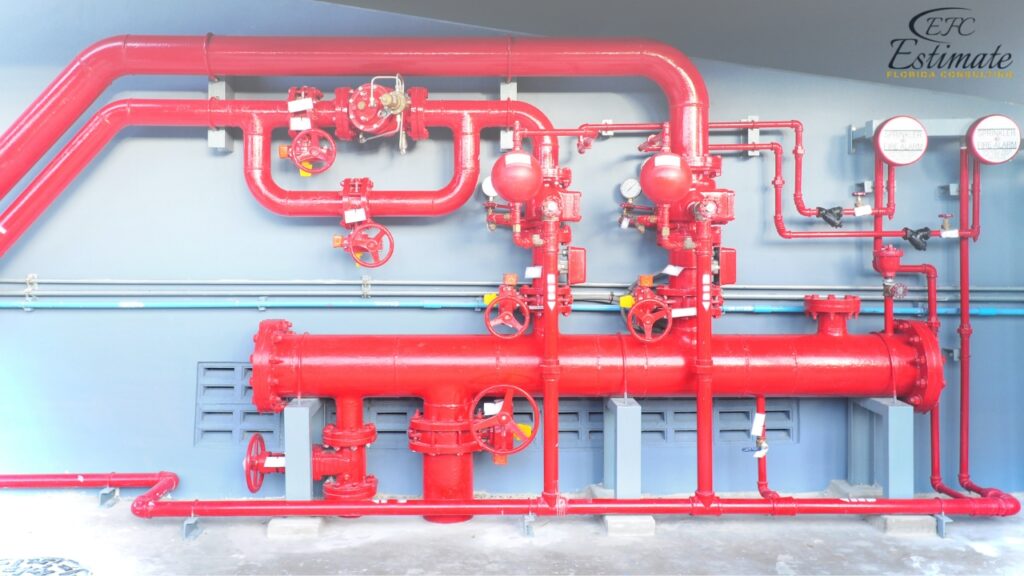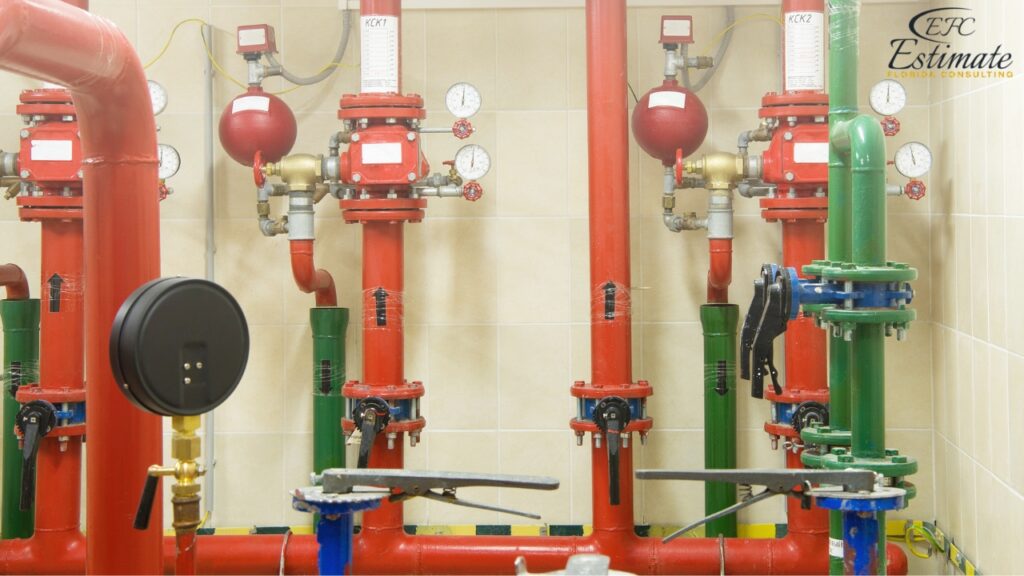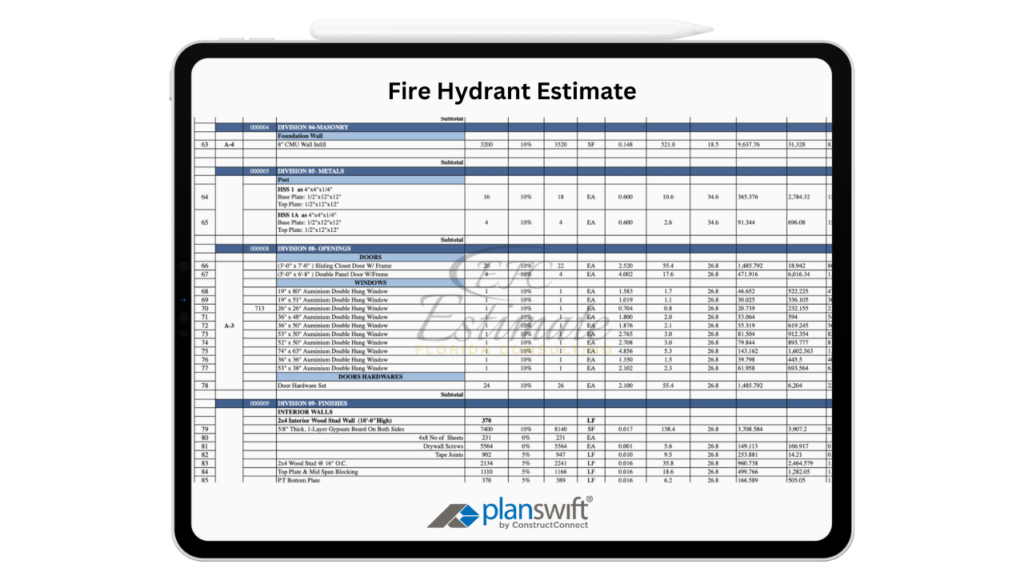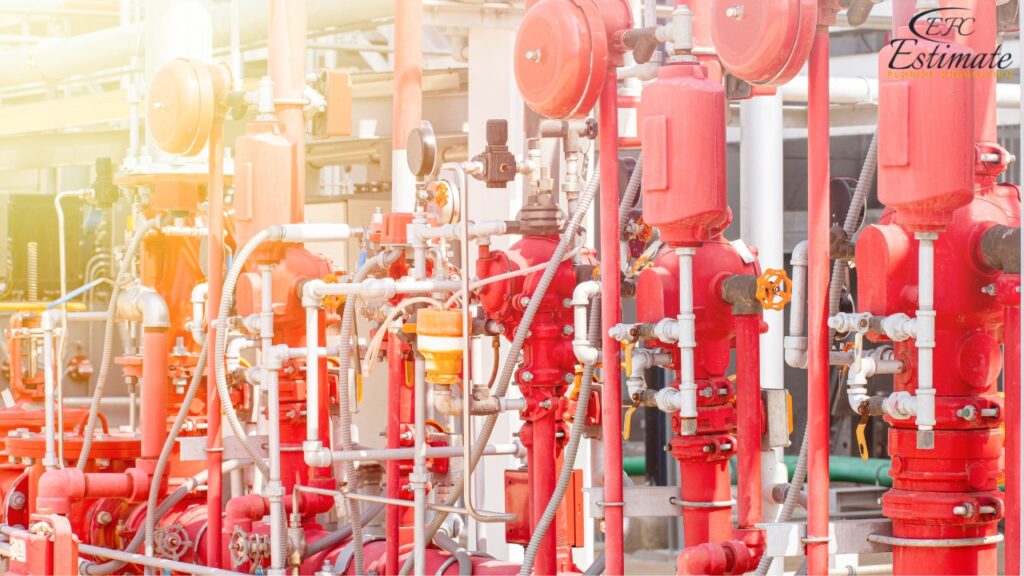How Much Does a Fire Hydrant Cost to Install?
Installing a fire hydrant typically costs between $3,900 and $9,100. This price includes the hydrant unit itself, excavation, installation, connection to the main water line, and any necessary permits. Costs can vary depending on local labor rates, how complex the installation site is, and the distance to the water main. Additional expenses might include traffic control, road repairs, or extra safety features. For a more accurate estimate tailored to your specific situation, it’s best to consult with local contractors and utility companies.

Average Cost to Install a Fire Hydrant
On average, installing a fire hydrant costs between $3,900 and $9,100. This price includes the hydrant itself, labor, site preparation, and any necessary permits and inspections. However, the final cost can vary significantly based on the specific circumstances of the installation. Factors such as local labor rates, the complexity of the installation, and the distance to the nearest water main can all impact the final cost. By breaking down these costs, property owners can develop a more accurate budget and avoid unexpected expenses, ensuring a smoother and more predictable project execution.
Cost Component | Estimated Cost Range |
Fire Hydrant | $1,300 – $3,250 |
Labor | $1,300 – $3,250 |
Site Preparation | $650 – $1,950 |
Permits and Inspections | $650 – $1,300 |
Factors Influencing the Cost
Type of Fire Hydrant
The type of fire hydrant you choose can greatly impact the overall cost. There are several types, including dry barrel, wet barrel, and flush hydrants, each with different features and price points. Dry barrel hydrants are typically used in colder climates where the water supply is below the frost line, making them more expensive due to their design. Wet barrel hydrants, which are common in warmer climates where freezing isn’t an issue, are generally less expensive. Flush hydrants, used in specific situations where standard hydrants aren’t suitable, can be the most expensive due to their specialized design and installation requirements. Each type of hydrant has its own benefits and drawbacks, which should be carefully considered based on the specific needs of the installation site.
Type of Fire Hydrant | Estimated Cost Range |
Dry Barrel Hydrant | $1,560 – $3,250 |
Wet Barrel Hydrant | $1,300 – $2,600 |
Flush Hydrant | $1,950 – $3,900 |
Location
The location of the fire hydrant installation plays a crucial role in determining the overall cost. Urban areas with higher labor rates and stricter regulations will typically have higher installation costs compared to rural areas. Additionally, the proximity to the existing water main and the condition of the installation site can affect costs. For instance, installations in densely populated urban areas may require additional traffic management and safety measures, further increasing costs. Conversely, installations in rural areas might incur higher costs for transporting materials and accessing the site.

The location also impacts logistical considerations, such as ease of access for maintenance and potential future upgrades to the water system.
- Urban Areas: Higher labor costs, stricter regulations, and potential traffic management issues can increase costs. Urban installations might also require more complex coordination with utility companies and local authorities to ensure compliance with all regulations and standards.
- Rural Areas: Generally lower labor costs and fewer regulatory hurdles, but longer distances to water mains can increase material costs. In rural settings, the condition of access roads and the need for additional infrastructure can also impact the overall cost.
Labor Costs
Excavation and Installation
Labor costs can vary significantly based on the complexity of the installation and local labor rates. Installing a fire hydrant typically requires skilled labor, including plumbers and construction workers, who ensure the hydrant is installed correctly and meets all safety standards. The complexity of the site, such as the presence of existing utilities or challenging soil conditions, can also affect labor costs. It’s essential to hire experienced professionals to avoid mistakes that could lead to future problems or increased maintenance costs. Proper installation by skilled laborers ensures the hydrant will function correctly in emergency situations, providing reliable water access for firefighting efforts.
Labor Task | Estimated Cost Range |
Excavation | $650 – $1,300 |
Installation | $650 – $1,950 |
Connection to Water Main | $650 – $1,300 |
Videos For Fire Sprinkler System Installation
Sprinkler System Installation
Fire Sprinkler Work
Sprinkler Installation
90% More Chances to Win Projects With Our Estimate!
- Multi-Family Building
- Hotel Building
- Hospital Building
- Warehouse Building
- School & University Building
- High-Rise Building
- Shopping Complex
- Data Center Building

Site Preparation
Clearing and Excavation
Site preparation includes clearing the area, excavating for the hydrant installation, and ensuring the site is ready for connection to the water main. The cost of site preparation can vary based on the condition of the land and the extent of the work required. Proper site preparation is crucial to prevent future issues such as settling or shifting, which can compromise the hydrant’s functionality. Investing in thorough site preparation ensures a stable and durable installation, reducing the risk of costly repairs or replacements in the future. Additionally, addressing any potential drainage issues during site preparation can prevent water accumulation and damage around the hydrant.
Site Preparation Task | Estimated Cost Range |
Clearing and Excavation | $390 – $910 |
Soil Stabilization | $260 – $650 |
Access Road (if needed) | $260 – $650 |
Permits and Inspections
Obtaining Necessary Permits
Obtaining the necessary permits and complying with local regulations is essential for legal and safe fire hydrant installation. Permit costs can vary based on location and the scope of the project. Ensuring compliance with regulations helps avoid fines and ensures that the hydrant meets all safety standards. Working with local authorities to secure the required permits and schedule inspections can also help streamline the installation process, preventing delays and additional costs. It’s important to factor in these administrative costs when budgeting for the installation, as they are critical for project approval and compliance.
Permit and Inspection Task | Estimated Cost Range |
Building Permits | $390 – $780 |
Inspection Fees | $260 – $520 |
Additional Considerations
Maintenance Costs
While the primary focus is on installation costs, it’s important to consider the ongoing maintenance costs associated with fire hydrants. Regular maintenance ensures that the hydrants are operational and meet safety standards. Maintenance tasks include inspection, lubrication, painting, and testing. These routine activities help extend the lifespan of the hydrants and ensure they function correctly in an emergency. Neglecting maintenance can lead to malfunctions, which can be costly to repair and pose significant safety risks. Proactive maintenance not only safeguards the hydrant’s performance but also helps avoid sudden, unexpected expenses related to emergency repairs.
Maintenance Task | Estimated Annual Cost Range |
Inspection and Testing | $130 – $390 |
Lubrication and Painting | $65 – $195 |
Minor Repairs | $130 – $260 |
Emergency Repairs
In the event of damage or malfunction, emergency repairs may be necessary. These costs can be higher due to the urgency and complexity of the repairs. Having a budget for emergency repairs is crucial to ensure the hydrants are always functional. Quick response to issues can prevent further damage and ensure that the hydrants are ready for use when needed. Emergency repairs might involve replacing damaged components, addressing leaks, or resolving issues caused by external factors such as vehicle impacts or vandalism. Preparing for such eventualities ensures that the hydrant system remains reliable and effective at all times.

Emergency Repair Task | Estimated Cost Range |
Repair Labor | $260 – $650 |
Replacement Parts | $130 – $390 |
Benefits of Installing a Fire Hydrant
Enhanced Public Safety
Fire hydrants are crucial for ensuring public safety by providing immediate access to water in case of a fire. Their strategic placement can significantly improve emergency response times and the overall effectiveness of firefighting efforts. Installing hydrants in key locations can help protect both residential and commercial properties, potentially saving lives and reducing property damage. The presence of fire hydrants can also enhance community confidence in local safety measures and contribute to the overall sense of security. Reliable fire hydrants are an integral part of a community’s emergency preparedness plan, ensuring that firefighters have the resources they need to respond quickly and effectively.
Compliance with Regulations
Installing fire hydrants is often required to comply with local building and safety regulations. Ensuring that your property meets these requirements can prevent legal issues and fines. Additionally, compliance can enhance the property’s value and appeal to potential buyers or tenants, as well-maintained safety infrastructure is a critical consideration for many. Adhering to regulatory standards demonstrates a commitment to safety and responsibility, which can positively influence community relations and local government support. Meeting these standards also ensures that properties are adequately protected against fire risks, which is a significant selling point for real estate transactions.
Long-Term Value
Investing in fire hydrants and other safety infrastructure can increase the long-term value of your property. Properties with comprehensive safety measures in place are often more attractive to buyers and tenants, leading to higher occupancy rates and property values. Furthermore, well-maintained fire safety systems can reduce insurance premiums, providing ongoing financial benefits. Enhanced fire safety infrastructure can also contribute to the overall appeal of a community, attracting more residents and businesses, and fostering economic growth. By demonstrating a commitment to safety, property owners can enhance their reputation and ensure a more secure investment.
Choosing the Right Fire Hydrant
Evaluating Hydrant Types
Choosing the right type of fire hydrant is essential for ensuring optimal performance and compliance with local requirements. Evaluate the different types of hydrants—dry barrel, wet barrel, and flush hydrants—to determine which best suits your location and needs. Consider factors such as climate, water pressure, and specific site conditions when making your selection. Consulting with fire safety professionals can provide valuable insights into the most suitable hydrant type for your specific situation, ensuring both functionality and cost-effectiveness.
Consulting with Professionals
Consulting with fire safety professionals and local authorities can help ensure that you select the appropriate hydrant and follow all necessary installation procedures. Professional advice can also assist in navigating regulatory requirements and securing necessary permits, ensuring a smooth and compliant installation process. Engaging experts can also provide peace of mind, knowing that the installation meets all safety standards and is carried out to the highest quality, reducing the risk of future issues.
Component | Estimated Cost (in dollars) |
Fire Hydrant | $1,300 – $3,250 |
Valves and Fittings | $650 – $1,300 |
Piping and Connections | $650 – $1,300 |
Miscellaneous Materials | $260 – $650 |
The type and quality of the fire hydrant, as well as the necessary valves, fittings, and piping, can significantly influence the overall cost. Higher-quality materials may come at a higher price but offer better durability and reliability. It’s important to choose components that meet the specific needs of the location and anticipated usage to ensure long-term performance. For example, areas with heavy traffic may require more robust hydrants.
Download Template For Fire Hydrant Project Breakdown
- Materials list updated to the zip code
- Fast delivery
- Data base of general contractors and sub-contractors
- Local estimators

Installation Process
Hiring Skilled Labor
Hiring skilled labor, including experienced plumbers and construction workers, is crucial for the proper installation of fire hydrants. Ensure that the contractors you hire have experience with fire hydrant installations and understand the specific requirements and standards for your area. Skilled labor can identify potential issues early in the process and implement solutions that prevent future complications. Investing in qualified professionals ensures that the installation is performed safely and efficiently, minimizing disruptions and ensuring compliance with all relevant codes.
Coordinating with Local Authorities
Coordinating with local authorities and utility companies is essential for the successful installation of a fire hydrant. Ensure that all necessary inspections and approvals are obtained, and that the installation process complies with local regulations and standards. Proper coordination can help prevent delays and ensure a safe and effective installation. Maintaining open communication with all stakeholders throughout the project can also facilitate the resolution of any issues that arise, ensuring that the installation stays on track and within budget.
Conclusion
Installing a fire hydrant involves various costs, including the hydrant itself, labor, site preparation, and permits. The total cost can range from $3,900 to $9,100, depending on factors such as the type of hydrant, location, and specific site conditions. By understanding these factors and planning accordingly, property owners and municipalities can ensure a smooth and cost-effective installation process. Proper installation and maintenance of fire hydrants are essential for public safety and compliance with local regulations, making them a critical component of community infrastructure. Investing in fire hydrants not only enhances safety but also adds long-term value to properties, making it a worthwhile endeavor. By taking a comprehensive approach to planning, installation, and maintenance, stakeholders can ensure that their fire hydrant systems provide reliable protection and support community resilience.
FAQs
Installing a fire hydrant typically costs between $3,900 and $9,100. This price includes the hydrant unit, excavation, installation, connection to the main water line, and necessary permits.
The average cost of $3,900 to $9,100 includes the hydrant itself, labor, site preparation, permits, and inspections. These components ensure that the hydrant is installed correctly and complies with all local regulations.
Type of Fire Hydrant | Estimated Cost Range |
Dry Barrel Hydrant | $1,560 – $3,250 |
Wet Barrel Hydrant | $1,300 – $2,600 |
Flush Hydrant | $1,950 – $3,900 |
Labor Task | Estimated Cost Range |
Excavation | $650 – $1,300 |
Installation | $650 – $1,950 |
Connection to Water Main | $650 – $1,300 |
Site Preparation Task | Estimated Cost Range |
Clearing and Excavation | $390 – $910 |
Soil Stabilization | $260 – $650 |
Access Road (if needed) | $260 – $650 |
The location significantly impacts costs. Urban areas often have higher labor rates, stricter regulations, and may require additional traffic management, increasing the overall cost. Rural areas may have lower labor costs but could incur higher material transport costs and longer distances to water mains.
The type of hydrant (dry barrel, wet barrel, flush) and its complexity influence costs. Dry barrel hydrants are typically more expensive due to their design, suitable for colder climates. Wet barrel hydrants are cheaper but only suitable for warmer climates. Flush hydrants are specialized and can be the most expensive.
Google Reviews



Process To Get a Fire Hydrant Cost to Install Estimate Report
Here I am going to share some steps to get a fire hydrant cost to install estimate report.
-
You need to send your plan to us.
You can send us your plan on info@estimatorflorida.com
-
You receive a quote for your project.
Before starting your project, we send you a quote for your service. That quote will have detailed information about your project. Here you will get information about the size, difficulty, complexity and bid date when determining pricing.
-
Get Estimate Report
Our team will takeoff and estimate your project. When we deliver you’ll receive a PDF and an Excel file of your estimate. We can also offer construction lead generation services for the jobs you’d like to pursue further.

